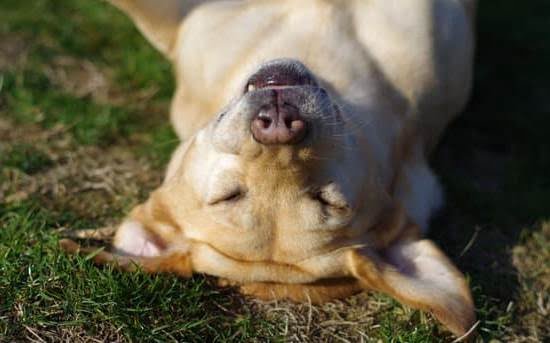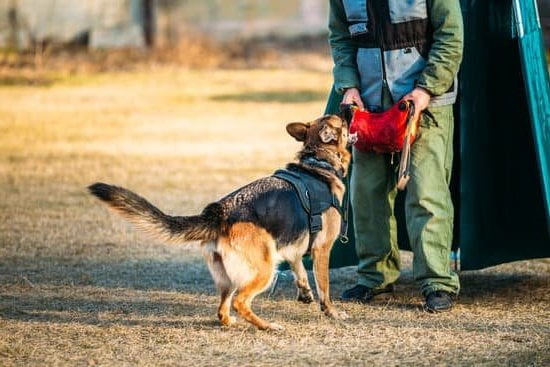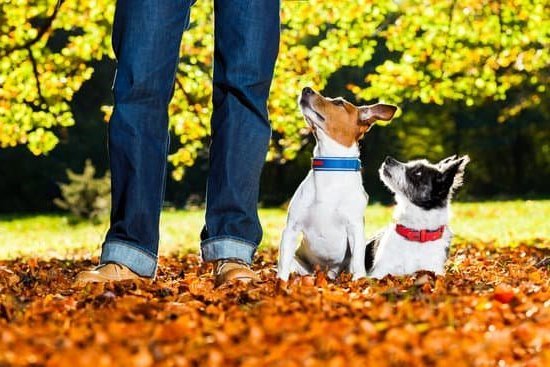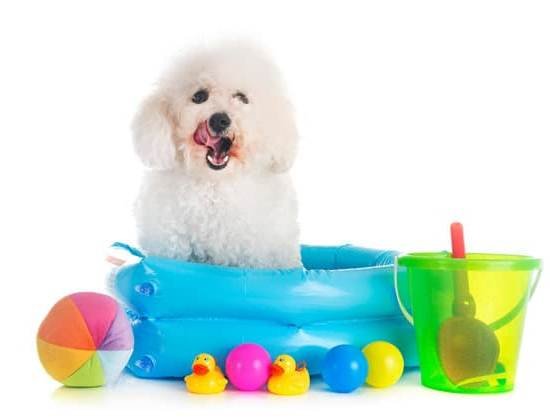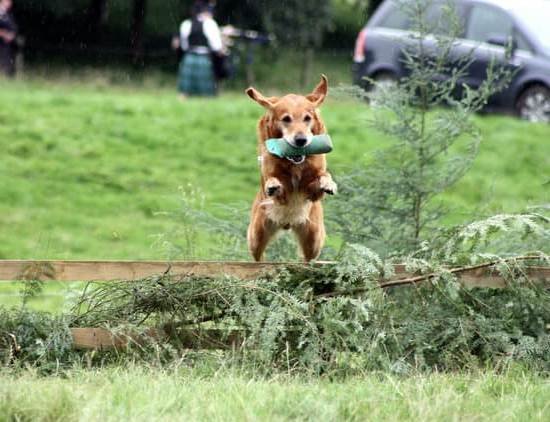Introduction
House training a dog is one of the most important skills that you will need to teach them. It can seem daunting at first, but it doesn’t have to be. By taking the time to properly educate yourself on proper house training techniques, along with patience and consistency on your part, your dog can quickly learn when and where they should go to the bathroom.
House training begins with setting appropriate expectations for what behavior you would like your pup to follow. Start by familiarizing yourself and your pup with the process by conducting consistent exercises in and around the house—make sure that every time your pup goes potty outside, they are praised and rewarded with a treat so they know they are doing something right! Depending on their age and behavior, you may want to consider having them wear a belly band or puppy pad until further into the process. Knowing that their bathroom breaks need to happen either in a particular area or outdoors will make things easier for both you and your pup as this eventually becomes routine.
Consistently monitoring your pup’s behaviour by taking them out more frequently initially during housetraining will also help ensure success. Taking note of any signs for when they may need to go as well as which areas (inside or outside) become favourite spots for accidents will provide valuable information when implementing a housetraining plan. Create a cue word such as “potty break” so that your pup learns that when those words are said, it indicates time for them to go outside or inside if using a puppy pad. Over time, these triggers in combination with consistent exercise and potty breaks should help reinforce good behaviour while housebreaking.
Create an Environment of Structure and Consistency
When it comes to house training your dog, one of the most important steps is to create an environment of structure and consistency. This means you should set a daily routine for your pup that includes regular eating and elimination times so that your pup learns when to go potty. Ensure walks are taken at roughly the same time every day, and for consistent reinforcement, always make sure you reward your pup with verbal praise or treats whenever they go in the designated area. It’s also essential to provide a designated area for your pet to go potty where they can be easily monitored; this will help ensure there are no accidents inside the house. Additionally, special attention must be paid any time there is a change in routine or environment; moving furniture around or adjusting mealtimes could confuse your pup and prompt them to do their business in places you’d rather they didn’t. Lastly, always remember that dogs need clear commands when trained; if you want them to eliminate in specific areas of the yard, use exact words and motions. Visual cues can be even more effective than verbal ones. When consistently enforced, these rules will help your pet learn quickly and efficiently, giving both of you peace of mind knowing that house training has been successful
Motivate and Praise Your Dog
One of the most important steps in house training your dog is to make sure you are motivating and praising your pup. Every time you catch them going to the bathroom in the right spot, use positive reinforcement like verbal praise, physical petting and by offering them treats. This will help them understand that they are doing what you want. You should also respond positively when they perform a trick correctly or deliver a command correctly. Additionally, use positive reinforcement when your pup avoids bad behavior around the house such as chewing furniture or making messes on the floor by rewarding it for avoiding these behaviors with treats. Praise and reward systems can help with any kind of obedience training, so be sure to establish clear expectations from the beginning and follow through whenever possible.
Anticipating and Preparing for Accidents
House training a dog can be tedious and take some time and patience. It is important to anticipate and prepare for accidents before they happen, as these accidents can set off a regression in the potty training process. By anticipating the need for trips outside or to the litter box, pet parents can decrease the likelihood of any incidents occurring. Before taking pup outside, be sure to go through a familiar routine that your dog responds to such as saying “Do you want to go out?”, which helps create potty training success over time. For puppies that may not yet have full bladder control, set up puppy pads around your home as an acceptable destination if they cannot hold it until it is time for them to head outdoors. Finally, keep track of any accidents that occur throughout the house and make sure to clean any affected areas with a cleaning agent specifically made for pet odors.
Preparing Your Home for House Training
When you are house training a dog, it is important to first prepare your home for success. Start by setting yourself up for success by creating a space that allows your pup to go and relax without being re-directed or corrected. Begin by controlling access to the rest of the house with gates or baby monitors while they are mastering their pottying training. Make sure their designated potty spot is the same area each time, so they learn quickly where it is that they need to go. Then, ensure you have on hand various cleaning supplies and pee pads as accidents will happen. Lastly, consider rewarding successful attempts at house training with verbal praise and treats in order to encourage them further!
Teaching Alternatives to Chewing and Biting
House training your dog is an essential part of caring for your pet. After all, nobody wants a house full of messes! Training your pup to go in the right places includes teaching them to resist chewing and biting on inappropriate objects around your home. This can be difficult since puppies love to chew and bite just about anything they come across. Luckily, there are simple strategies you can use to help teach your pup the correct behavior.
First, you must understand why puppies chew and bite in the first place. Puppies often do this as a way of exploration; they are learning about their environment through play. Others may chew or bite out of boredom, anxiety or stress. In order to stop this behavior from developing further, it’s important that you provide engaging toys and activities for them to focus on instead of things around your home. Regular walks and playtime can also help tire out an inexperienced pup! Secondly, it’s important prevent access to things like furniture, shoes or other items that might become targets for unwanted chewing or biting by keeping them out or stored away (as appropriate).
Additionally, using positive reinforcement is a great way to train dogs not to chew or bite inappropriate items. If they happen upon something they shouldn’t have and start chewing, redirect their attention with a safe toy or treat-filled puzzle toy instead; then praise them for making the good decision! If needed, you can also pair these treats with verbal cues like “drop it” or “leaving it.” Be sure that if correction needs to be done that it is done in a gentle manner– never punish negative behaviors – such as growling; ultimately punishing isn’t necessary as long as consistent positive reinforcement routines are used. With enough patience and repetition, pups learn quickly what is acceptable behavior and what isn’t!
Handling Separation Anxiety Issues
House training involves teaching your dog to appropriately toilet in the house. It is important to both prevent any potential messes and to ensure that your dog feels comfortable toileting in its own space. This can be done through a combination of using puppy pads, rewarding for appropriate toileting and implementing a schedule for toileting opportunities. To help prevent accidents inside the house, it is important to quickly remove them from the area when they have an accident so that the scent won’t attract more mess.
Separation anxiety issues crop up when dogs aren’t used to being left alone or without their owners for extended periods of time. This can manifest itself in destructive behaviour such as excessive barking, pacing or even chewing on objects in an attempt to cope with the distress associated with being separated. It is vital to train dogs with separation anxiety by counter conditioning and desensitization techniques as well as allowing them short unsupervised times away from their owners once they are showing signs of mastery over it. Additionally, encouraging playdates and walks with other people or pets can also help lessen separation-related distress significantly.
Using Crate Training to Your Advantage
Crate training is a great way to house train dogs as it helps to prevent accidents and encourages good behaviour. The idea behind crate training is that dogs are den animals, so will not soil their den area. If a puppy has free access to the house, they may choose to go potty in a convenient spot such as an area rug or corner of the living room. The use of the crate ensures that there are limited areas that the puppy can go potty and you can keep an eye on them while they’re indoors. When crate training your pup, it’s important to remember not to leave them in the crate for too long each day as this can lead to behavioural issues due to lack of socialization. Also make sure your pup always has access to clean food, water and enough space that is comfortable for them while they are in their crate. Additionally, incorporate plenty of positive reinforcement when using crates with rewards such as treats and toys which will reaffirm good behaviour and make it much easier for your pup to become fully housetrained.
Using Relief Areas to Guide Your Dog
House training a dog is a crucial step to having a well-behaved pet and starts with having designated relief areas. This can be done by taking your dog outside to the same spot each time they need to go, such as the backyard or on walks. Once in the relief area, spend some time praising your puppy as soon as they begin their business. When finished, reward them with a treat or toy so that your pup knows that going outside is something beneficial for them.
Take the time to watch your puppy each day and observe the signs that show they need to go out even if it is not routine potty time. These signs may be pacing throughout the house, sniffing or circling around an area, barking at you or hiding under furniture. If these movements are observed, quickly scoop them up and bring them outdoors for another opportunity to reinforce proper house training. Additionally, bring many supplies such as treats and toys when venturing outside so you can further reward your pup for eliminating in their relief area rather than inside the home. Above all else, consistency will help both you and your furry friend reach this important milestone!
Establishing a Routine for Potty Breaks
Dog house training can be a challenge for many pet owners, but with patience and consistency it is possible to teach your dog how to “go” when and where you want them to. An important part of house training involves establishing a regular routine for potty breaks. Dogs thrive on routines and having one in place will give them the opportunity to learn quickly where they should go.
To begin, create a routine that works around your dog’s needs—not yours. Pay attention to your pup’s behaviors for signs of when they may need to use the bathroom, such as sniffing, pacing or circling around an area consistently—these are all cues that indicate it’s time to take them outside. Ideally, puppies should be taken out at least every few hours (after meals and wake up times are generally good intervals) and always first thing when they wake up in the morning and last thing before bedtime. It’s also important to take your pup outside after playing/exercising or naps as these activities will encourage urination/defecation more frequently than usual.
Once outside, give your pup some time to explore their new environment while using positive reinforcement (such as treats), verbal cues (like “go potty”), or simply just wait patiently until they do their business. Once complete, reward them with affection and praise so that they eventually recognize going potty outdoors as something enjoyable which will help motivate future outings. If there are any accidents inside the home, don’t reprimand or scold your pooch as this is not likely to be effective in teaching them how you would like them to behave instead redirect their attention back outside and remind them where their intended destination is supposed to be. With consistency over time, dogs typically pick up on routines relatively quickly!
Conclusion
House training a dog is no small task–it requires dedication and patience. The rewards of it, however, are great. Seeing the results of your hard work in the form of an obedient and well-behaved pet is a source of immense pride and satisfaction to you as a pet owner. Not only will it make taking care of them easier than ever before, but it also makes visits to friends, family, or public areas much more pleasant for everyone involved. Additionally, house training your pet can increase their life expectancy – happy and well-trained pets are generally healthier overall. Ultimately, investing the time in house training your pup can have endless long-term benefits that will benefit you and them for years to come!

Welcome to the blog! I am a professional dog trainer and have been working with dogs for many years. In this blog, I will be discussing various topics related to dog training, including tips, tricks, and advice. I hope you find this information helpful and informative. Thanks for reading!

